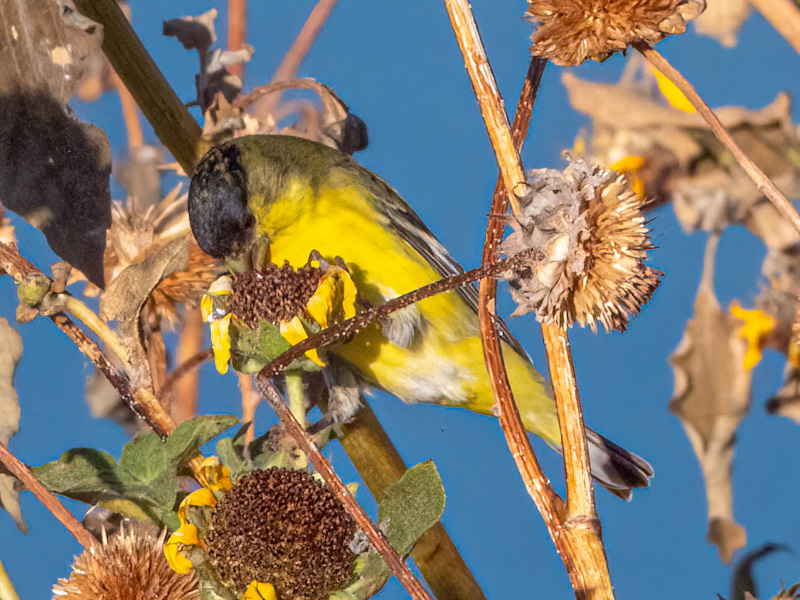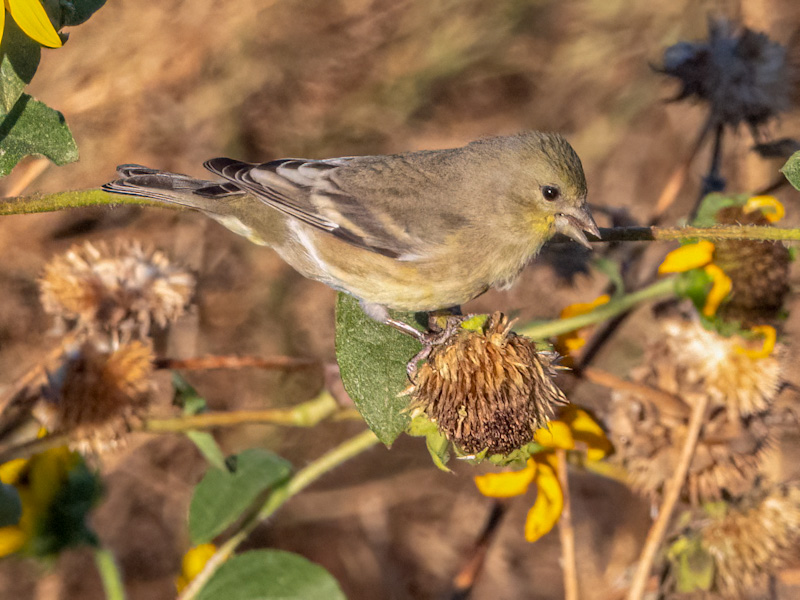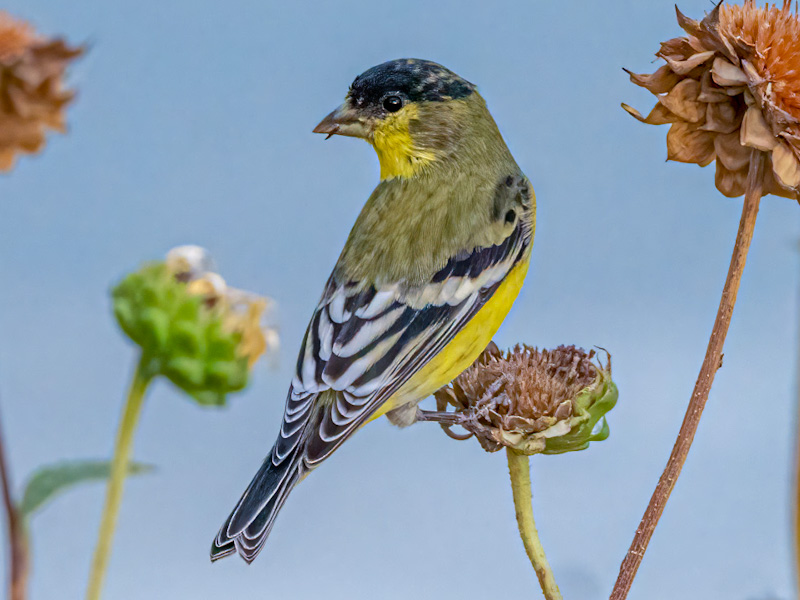
Common Name: Male Lesser Goldfinch
Scientific Name: Spinus psaltria
Subspecies: Five subspecies are recognised, the one in Las Vegas is Spinus psaltria hesperophilus.
Order/Family: Passerine/Fringillidae (True Finches)
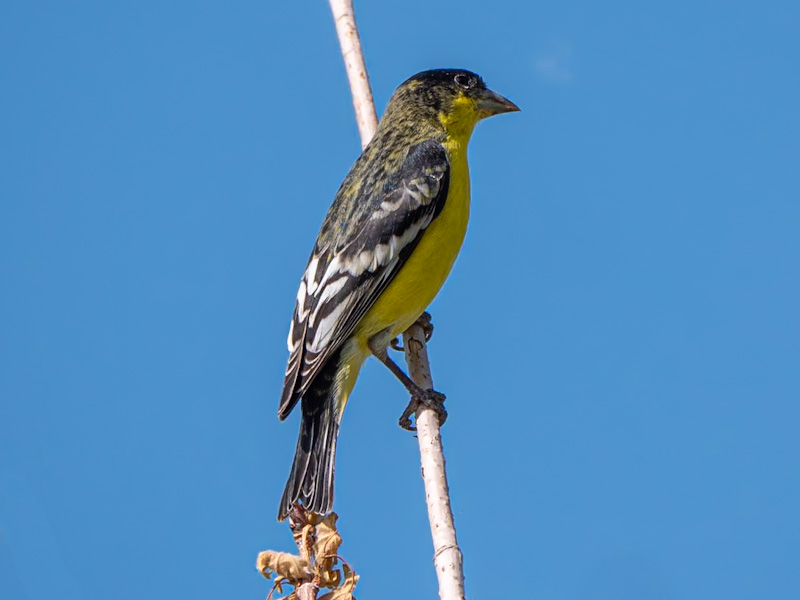
Description: Males are easily recognized by their bright yellow underparts and big white patches in the tail (outer rectrices) and on the wings (the base of the primaries). They range from having solid black from the back to the upper head including the ear-coverts to having these regions medium green; each of the back, crown and ear regions varies in darkness rather independently though; as a rule, the ears are not darker than the rest.
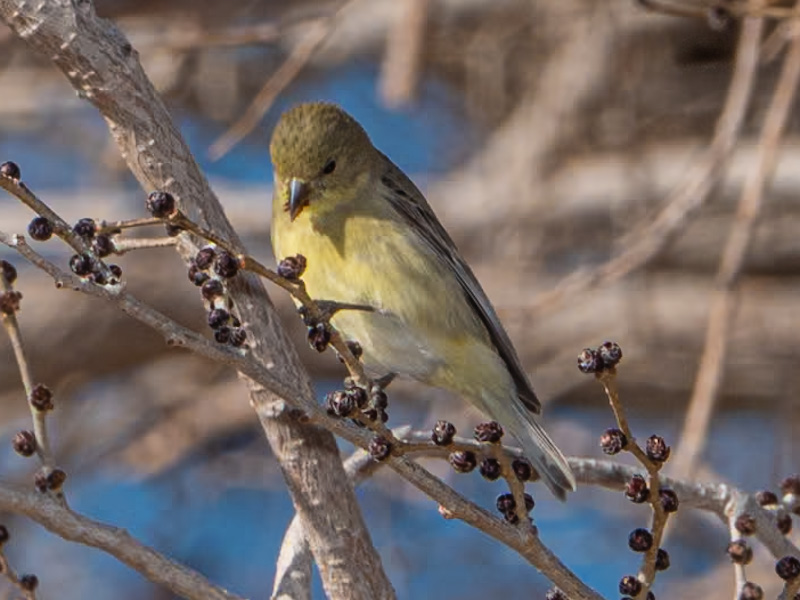
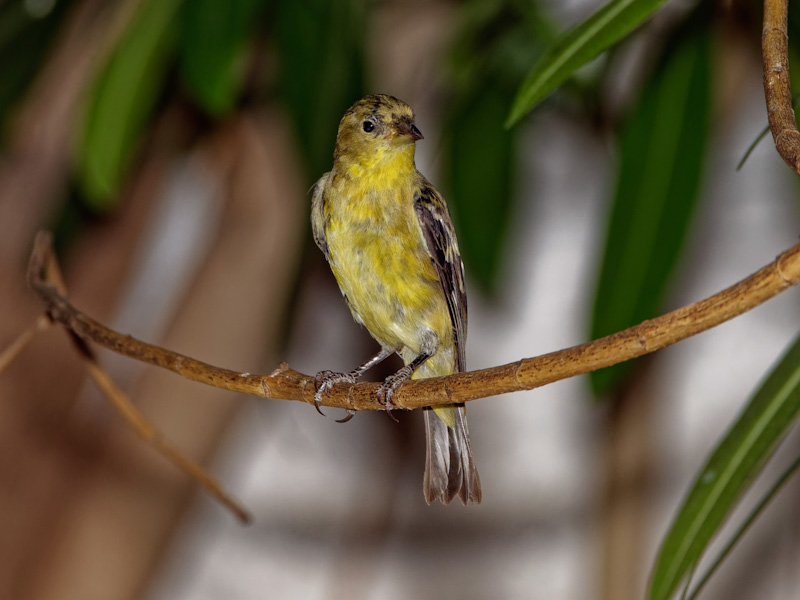
Females’ and immatures’ upperparts are more or less grayish olive-green; their underparts are yellowish, buffier in immatures. They have only a narrow strip of white on the wings (with other white markings in some forms) and little or no white on the tail. They are best distinguished from other members of the genus by the combination of small size, upperparts without white or yellow, and dark gray bill.
Distribution: In most of the range, dark birds termed psaltria (the Arkansas black-backed goldfinch) predominate. The light birds are termed hesperophilus (the green-backed goldfinch) and are most common in the far western U.S. and northwestern Mexico.
Habitat: It utilizes almost any habitat with trees or shrubs except for dense forest, and is common and conspicuous in many areas, often coming near houses. It is common at feeders in the Southwest United States and will come almost anywhere with thistle feeders.
